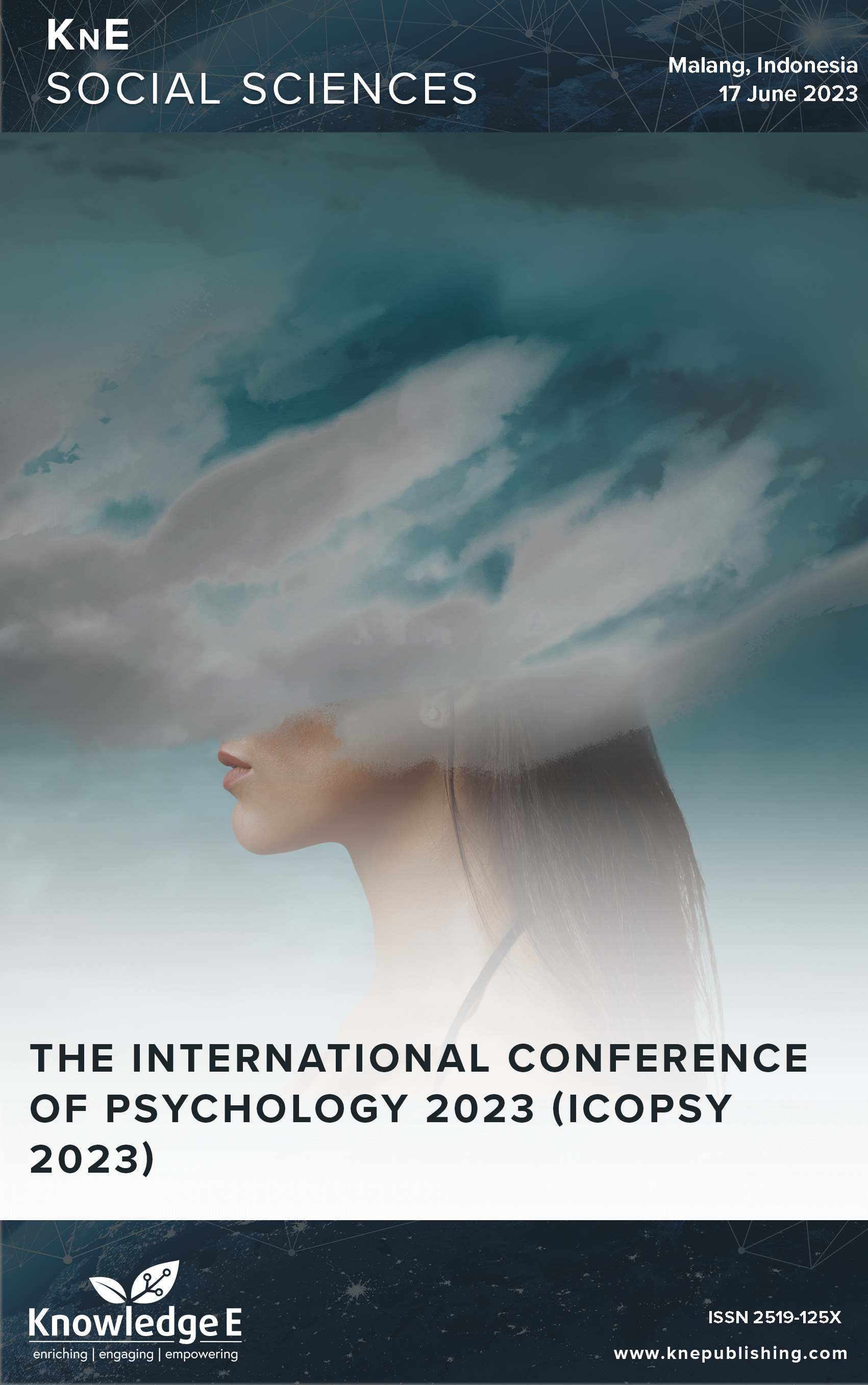Adaptation of the Online Disinhibition Effect Scale
DOI:
https://doi.org/10.18502/kss.v8i19.14381Abstract
The phenomenon of online disinhibition prompts individuals to relax their internal boundaries, as they can deviate from social norms, particularly in virtual environments. Individuals tend to engage in behaviors that may cause disruption to others and pose potential harm to themselves. We assume that internet usage is expected to remain significant in the coming years, so a tool is needed to assess this phenomenon. We use The Confirmatory Factor Analysis tool to test adapted version of The Online Disinhibition Effect scale from English to Bahasa Indonesia. The analysis findings indicated that the tool is suitable for characterizing the online disinhibition effect X2 (6, 252)=.48, p=.49. It means that this instrument is suitable for use in Indonesia.
Keywords: Instruments, ODE, online
References
[2] Schlosser AE. Self-disclosure versus self-presentation on social media. Curr Opin Psychol. 2020 Feb;31:1–6.
[3] Currey H. DIGITAL 2022: ANOTHER YEAR OF BUMPER GROWTH. We Are Social UK. https://wearesocial.com/uk/blog/2022/01/digital-2022-another-year-of-bumpergrowth- 2/
[4] Joinson A. Causes and implications of disinhibited behavior on the Internet. Psychology and the Internet: Intrapersonal, interpersonal, and transpersonal implications. Academic Press; 1998. pp. 43–60.
[5] Sullivan A. Bourdieu and Education: how useful is Bourdieu’s theory for researchers? Netherlands Journal of Social Sciences. 2002;38:144–66.
[6] Ellison N, Heino R, Gibbs J. Managing Impressions Online: Self-Presentation Processes in the Online Dating Environment. J Comput Mediat Commun. 2006;11(2):415–41.
[7] Tidwell LC, Walther JB. Computer-Mediated Communication Effects on Disclosure, Impressions, and Interpersonal Evaluations: Getting to Know One Another a Bit at a Time. Hum Commun Res. 2002;28(3):317–48.
[8] Suler J. The online disinhibition effect. Cyberpsychol Behav. 2004 Jun;7(3):321–6.
[9] Prizant-Passal S, Shechner T, Aderka IM. Social anxiety and internet use – A meta-analysis: what do we know? What are we missing? Comput Human Behav. 2016;62:221–9.
[10] Wu S, Lin TC, Shih JF. Examining the antecedents of online disinhibition. Inf Technol People. 2017;30(1):189–209.
[11] Wright MF, Harper BD, Wachs S. The associations between cyberbullying and callous-unemotional traits among adolescents: the moderating effect of online disinhibition. Pers Individ Dif. 2019;140:41–5.
[12] Hollenbaugh EE, Ferris AL. Facebook self-disclosure: examining the role of traits, social cohesion, and motives. Comput Human Behav. 2014;30:50–8.
[13] Green T, Wilhelmsen T, Wilmots E, Dodd B, Quinn S. Social anxiety, attributes of online communication and self-disclosure across private and public Facebook communication. Comput Human Behav. 2016;58:206–13.
[14] Kordyaka B, Jahn K, Niehaves B. Towards a unified theory of toxic behavior in video games. Internet Res. 2020;30(4):1081–102.
[15] Fichman P, Rathi M. The Impact of Culture on Online Toxic Disinhibition: Trolling in India and the USA. Proceedings of the 55th Hawaii International Conference on System Sciences. 2022. 2890– http://hdl.handle.net/10125/79691
[16] Cook C, Conijn R, Schaafsma J, Antheunis M. For Whom the Gamer Trolls: A Study of Trolling Interactions in the Online Gaming Context. J Comput Mediat Commun. 2019; 24(6): 293- https://doi.org/10.1093/jcmc/zmz014.
[17] Antoniadou N, Kokkinos CM, Markos A. Psychopathic traits and social anxiety in cyber-space: A context-dependent theoretical framework explaining online disinhibition. Comput Human Behav. 2019;99:228–34.
[18] Lee YJ. Influence of Self-Rated Health Status, Self-Efficacy and Social Support on Health Behavior in Urban Elderly People Living Alone. The Journal of the Convergence on Culture Technology. 2018;4(2):81–7.
[19] Udris R. Cyberbullying among high school students in Japan: Development and validation of the Online Disinhibition Scale. Comput Human Behav. 2014;41:253–61.
[20] Lowry PB, Zhang J, Wang C, Siponen M. Why Do Adults Engage in Cyberbullying on Social Media? An Integration of Online Disinhibition and Deindividuation Effects with the Social Structure and Social Learning Model. Inf Syst Res. 2016;27(4):962–86.
[21] Wang W. Internet dependency and psychosocial maturity among college students. Int J Hum Comput Stud. 2001;55(6):919–38.
[22] Maftei A, Danila O. Give me your password! What are you hiding? Associated factors of intimate partner violence through technological abuse. Curr Psychol. 2023;42(11):8781–97.
[23] Corcoran VP, Andover MS. Online disinhibition and internet communication of nonsuicidal self-injury. Suicide Life Threat Behav. 2020 Dec;50(6):1091–6.
[24] Gakhal S, Wilson C. Is students’ qualitative feedback changing, now it is online? Assess Eval High Educ. 2019;44(3):476–88.
[25] Trifiro BM, Paik S, Fang Z, Zhang L. Politics and Politeness: Analysis of Incivility on Twitter During the 2020 Democratic Presidential Primary. Soc Media Soc. 2021;7(3):205630512110369.
[26] Guadagnoli E, Velicer WF. Relation of sample size to the stability of component patterns. Psychol Bull. 1988 Mar;103(2):265–75.
[27] Eisingerich AB, Rubera G. Drivers of Brand Commitment: A Cross-National Investigation. J Int Mark. 2010;18(2):64–79.

